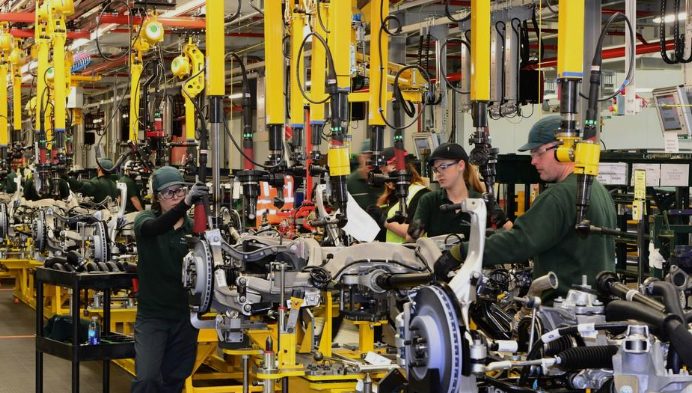How To Modernize Your Pub

If it’s been a while since your pub had a fresh lick of paint, it may be time to undertake some modernization. Creating a sleek and welcoming space can reap huge rewards for your business, helping to entice new customers, retain loyal pub-goers, and ultimately protect your bottom line.
Here, we explore several ways to modernize your pub’s interior.
Why Do You Need Modernization Of Your Pubs?
Just like any other area of fun and entertainment, the pubs have their levels of interest. This is why the stakeholders understand the need for refurbishment plans. However, here we describe why there is a need to modernize the pubs.
If your pubs are not performing as they used to, then you can understand that there is a need for refurbishment. The hotel and refreshment sector is undergoing a huge transformation, and therefore, the stakeholders in the sector understand the need for change. This is why they are bettting on modernization. Competition governs the sector. This is why they are investing their hard-earned money in giving their pub a new look.
Driving away the monotony is another point that you must understand as a pub owner. When the same person visits your pub quite often, then it searches for something new and fresh. We mean, they are looking for a new ambiance and service. You must work on keeping their expectations in mind.
How To Modernize Your Pubs
Every business, irrespective of size and manner, faces challenges. It is the same with the pub business. If you loiter around your favorite streets, you can easily find the wave of competition there. It narrows down the opportunity. Therefore, you have no option but to consider modernizing your pubs. It is one of the ways to keep yourself competitive.
Upgrade the furniture
Tatty tables and worn-out chairs don’t create the most welcoming environment, so it’s worth upgrading any outdated furniture when modernizing your space. Consider the overall look you’re trying to achieve, as well as the clientele you want to attract.
Are you keen to create a modern bar area perfect for evening drinks? Then a minimalist design with plush velvet bar stools and glass tables might work well. Going for a rustic country pub vibe? Then warm oak tables with plaid or leather chairs could be the ideal choice.
There are plenty of interior design styles to explore, from farmhouse chic to industrial – so choose one that best suits your offering and location.
Use mood lighting

Installing ambient lighting throughout is one of the easiest ways to give your pub a new lease of life. To figure out the best option for the space, break down the interior into sections such as the bar, seating areas, and dining spaces. Each zone will require a different type of lighting.
Large pendants may work well over dining tables, while strip lighting is hugely effective underneath bars. In intimate seating areas, consider using floor or wall lamps to create a warm and cozy atmosphere.
Whatever lighting design you go for, we recommend using warm, yellow-toned bulbs rather than cool lights with blue undertones.
Embrace natural elements
Add life to your pub by using a range of plants and flowers throughout. Bringing the outdoors in is a hugely popular interior design trick, as it can instantly add color, texture, and shape to a space.
Plants make great focal points in pubs and can also serve as privacy screens between tables. If you want to make a statement, consider putting a large artificial tree in the center of the space, like a cherry blossom or olive tree.
Alternatively, install something Insta-worthy, like a large flower wall with neon lighting in the middle. This not only looks good but can be a great marketing tactic. As customers tag you on social media, it helps attract attention to your pub and encourages new customers to try you out.
Pub Gardens
If your pub has an outside space, then you can make the most out of it. You can follow different design patterns to create a lively atmosphere. You can keep it simple…just a few chairs, benches, and waterproof sofas and make the place charming and fresh. You can take a look at the patio or kitchen garden design and thereafter ensure that you decorate it in the most simplistic of patterns. Add some points and make the pub a family spot where people, mainly the guests, will find themselves in utter comfort.
Toilets
Redesigning the toilet must be an integral and inalienable part of the pub design. You might have read the social satire called The Rape Of The Lock by Alexander Pope. Though the poem’s approach is bantering the trivial grandly, you can not simply overlook the fact that the toilet was an important section of the day. Yes, its importance still persists. You can reach out to Prime Dumpster porta potty rentals while your toilet is under renovation.
You can invest in the unique and stylish fixtures of your sinks and faucets. Moreover, you could choose the eco-friendly and the water-saving plumbing fixtures so that you live the values of sustainability.
Optimize The Available Place
We all know that the available space is depleting with time. You will need to work cleverly with the space available to you. At the same time, you will have to ensure that you optimize the space to make the place beautiful. Screening tables near the entrance also offer seating arrangements. First, take a look at the space that you are not utilizing. Thereafter, you call the expert designer to redesign your pub hall completely. Look that utilization of the available space governs the new design.
Or if you want to do it alone then first draw a picture of the empty hall and look at the flow and traffic engagement. Screening tables near the kitchen also offer quite a nice touch so that people who are sitting do not feel the gush of cold air.
Conclusion
When undertaking any form of upgrades to your establishment, you may find it useful to check if you have the right level of public house insurance to cover your contents. It’s also important to set a realistic budget for the work and keep track of costs to avoid overspending on your upgrades.
How will you choose to modernize your pub?
Read Also:













